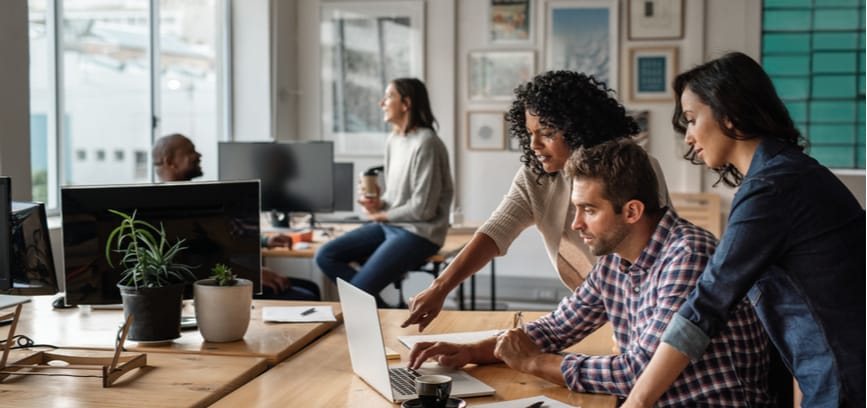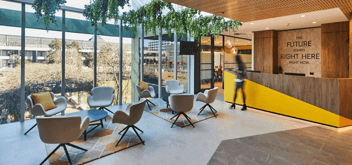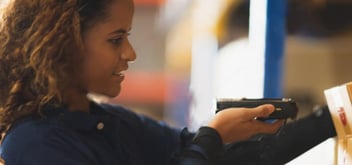When the world was flung into a mass work-from-home experiment in 2020, American Express Global Business Travel’s employees didn’t lack the tech or training to make it work. In fact, 70 to 80 percent of the 500 strong Australian workforce already worked from home.
We spoke with Kate Witenden, Head of Human Resources at AMEX Global Business Travel during 2020, about how their virtual-first workforce handled the crisis almost seamlessly. We also explored what shifts still need to occur and what other companies can learn from their business model and company culture. Finally, we talked about what Kate sees as the future of the office.
A snapshot of the business pre-COVID
Pre-COVID, AMEX Global Business Travel had offices in Perth, Melbourne and Sydney, but around 70-80 per cent of staff were designated as ‘virtual employees’ (i.e. not attached in any permanent capacity to a physical office). These virtual employees were fully set up to work from home 100 per cent of the time. They were equipped with the technology and processes to service customers and collaborate with their colleagues remotely.
Kate said this working model was one of the things that attracted her to the business in the first place: “I was intrigued from an HR perspective. Does it actually work? And it did.”
“This is a highly collaborative global organisation that works over many time zones. So they innately built this model so that people could be set up to work from home at the hours required.”
Even those employees who did regularly work from an office were ultimately enabled to also work remotely.
“We all had the equipment to be able to work from home already because the chances were that nine out of 10 of those people who still chose to turn up to the office had to be on calls with the UK out of normal business hours at home. The work required us to be flexible.”
The AMEX response to the crisis
In March 2020, when Australian office workers were advised to work from home by the government, the AMEX Global Business Travel team didn’t miss a beat. Kate told us there were only five (out of 500!) employees that weren’t ready.
“They were brand new recruits going through training in the office with seasoned consultants or team leaders. While we had the technology to train people remotely, it took some quick thinking from the team to get these ‘newbies’ up and running at home,” Kate explained.
“But the reality is that’s how quick we were to be able to move with the crisis to 100 percent of employees working from home – and WFH continued throughout the entire year of 2020.”
What needed to evolve
Pre-COVID, AMEX Global Business Travel had town hall-style meetings to provide business updates from the leadership team. But during the pandemic, this level and amount of communication couldn’t keep up with the rapid changes and shifting business landscape – especially in a hard-hit industry like business travel. Instead, town halls started happening more regularly and evolved into a two-way communication channel, with employees able to ask questions of their leaders.
With many employees stood down and a lot of uncertainty, though, more needed to be done. “The leadership team created their own WhatsApp groups so they could pass on messages,” explained Kate.
“It was about adapting and using the right medium for the situation rather than a more traditional corporate channel. So, although the WhatsApp groups won’t be a permanent fixture, they disseminated information quickly and got the job done.”
Although the outlook for the business travel sector is uncertain, Kate said, “Out of horrible adversity came something quite miraculous – it permitted people to act with speed.”
“It’s going to be a long recovery, but having been through it will put the business in such an amazing standing for when lights switch back on in business travel.”
The future of the office
Kate noted that “the danger of going completely virtual is that nothing replaces that face-to-face collaboration, the feeling of energy being created.”
“I think it’s very, very difficult to sustain [100 percent virtual] unless you’ve got excellent tools and practices and discipline. That said, we had a lot of those foundations already in place in our business, which set us up for success.”
We were curious to know what Kate thought the office of the future might look like:
“The office of the future is about collaboration. The rest of the stuff, your emails and solo work, you can do that from home in peace and quiet much more productively.
“So if you’re going to be in the office, you need to be present. You need to be available, you need to be open, and you need to be there to give something back. Turning up to bring your laptop in for the sake of sitting in the office is not what the office of the future is about.”
If you’d like to explore more about what the future holds for the office, take a look at Leading the Future of Work in Australia: Insights and Strategies. It’s our one-stop resource for all things future of work-related.
Thank you to Kate Witenden for this interview. You can connect with Kate on LinkedIn.






